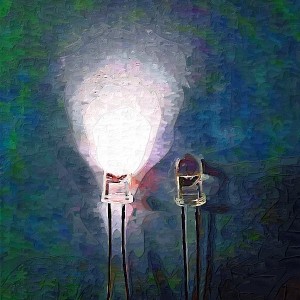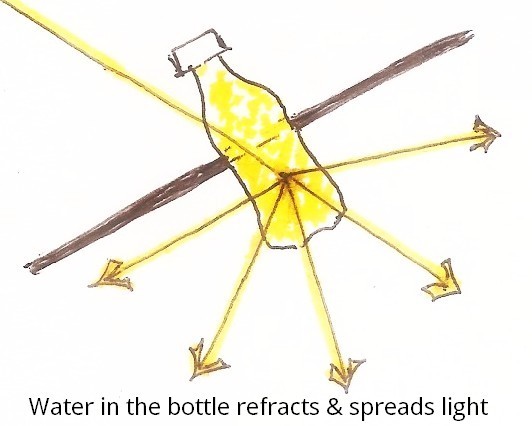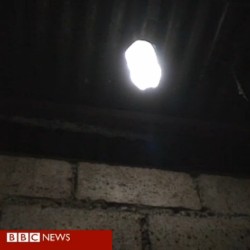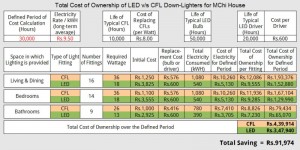The incandescent bulb is the most common – and one of the least energy-efficient lighting options for brightening a space. Today we have numerous fluorescent type fittings; both, the old tubelight and modern compacts which retro-fit into incandescent holders. Light Emitting Diodes – LEDs – are rapidly getting cheaper and have now reached a level of affordability. The ways of lighting an interior or exterior space are numerous. We’ll touch on a few common ones here and see how they compare.
Daylight
Apart from being free, studies have shown that natural light improves productivity and has significant health benefits compared to artificial light. Getting natural light into your home or office is not difficult to do – all it takes is a little planning by the architect at the design stage. It is necessary, of course, that the designer take care of glare and solar heat-gain but, once these factors are accounted for, there’s nothing better than sunshine to light up your life.
Unlike in Europe and North America, in peninsular India, light from the north-east is the best because it is glare-free. In fact, that’s why vastu stipulates that you put your study in that very corner of your house. Conversely, the south-west is where the glare is the worst, so it’s better to have shade giving trees to protect you on that side. If you are living in the extreme north of our country, however, where it is really cold in winter, you’d want to open out your southern side and achieve some heat gain. For the rest of us, reflected and indirect light is the best.
The mechanics of day lighting are more complicated and will, time-willing, have a page of their own but suffice to say that every architect should try to achieve adequate lighting without building up heat inside the building.
Tube Lights
Tubelights have been around for a while and, because of the harsh light they gave off in their early days, there are numerous people who detest their very existence. But tubelights are efficient and their colour temperature has improved dramatically in recent times which makes them as comfortable to use, if not more so, than an ordinary bulb.
Tubelights have a long life and their drawback, if any, it is that they require a bit of extra energy to start up. Newer electronic chokes have reduced this surge but it’s still often better to leave a tubeliight on than to turn it off and then re-start it within a few minutes.
Compact Fluorescent Lights (CFLs)
CFLs are the new tubelights – they have been squeezed and twisted so that they can replace ordinary bulbs. And they should! CFLs consume just 25% of the energy that a bulb does and are available in “soft white” which is easy on the eyes. Granted, they cost more, but the energy saved is more than paid back during its life which is 10 times as long as a bulb.
LEDs
LEDs or Light Emitting Diodes are extremely energy efficient and should last for at least 10 years of continuous usage. They are becoming cheaper as production ramps up and the technology improves. They are still expensive when compared to the other forms of lighting but, as the comparison shows, that cost is more than paid back in the long term.
Efficiency Shootout
Here is a comparison that tells you approximately how much you benefit by installing fluorescent fittings or LEDs in place of incandescent ones. Note that the figures are approximate and likely to change as time goes by.
| Cost Comparison over 10,000 hrs Usage |
Bulb |
CFL |
Tube |
LED |
| (a) |
Life of single bulb/tube |
(hrs) |
1,000 |
10,000 |
2,000 |
25,000 |
| (b) |
Number of bulbs/tubes required |
Nos. |
10 |
1 |
5 |
1 |
| (c) |
Cost of each bulb/tube |
(₹) |
10 |
200 |
100 |
350 |
| (d) |
Total cost of bulbs/tubes [(b) x (c)] |
(₹) |
100 |
200 |
500 |
350 |
| (e) |
Light Output [lumens per watt] |
(lm/W) |
15 |
60 |
75 |
90 |
| (f) |
Power requirement [equivalent to 100W bulb] |
(W) |
100 |
25 |
20 |
15 |
| (g) |
Electricity consumed |
(kWh) |
1,000 |
250 |
200 |
150 |
| (h) |
Running Cost [@ Rs. 5/kWh] |
(₹) |
5,000 |
1,250 |
1,000 |
750 |
| (i) |
Overall Cost [(d) + (h)] |
(₹) |
5,100 |
1,450 |
1,200 |
1100 |
| (j) |
Saving compared to ordinary bulb |
(₹) |
NA |
3,650 |
3,900 |
4,000 |
As you can see, we can no longer say that the ordinary tubelight is still king. LEDs have a rated life of 25,000 hours although the drivers (transformers) will only last for half as long. Like the new fluorescent fittings, they are usually available at colour temperatures that closely resembles daylight.
External Links
Philips India Lighting
Osram India
Havells Lighting
GE Asia Pacific
More
If you are the manufacturer/dealer of any product that you feel is appropriate for this page, please fill this form stating clearly what exactly makes your product green/sustainable.
Please note that Greenwashing will not get you anywhere and inclusion of the product is not guaranteed and is entirely at our discretion.



 Sometimes, a simple idea can be immensely powerful. Maybe the bottle light is not something that makes a huge difference to your life or mine but, for those who live in shanties with little or no electricity, this is a godsend.
Sometimes, a simple idea can be immensely powerful. Maybe the bottle light is not something that makes a huge difference to your life or mine but, for those who live in shanties with little or no electricity, this is a godsend. Essentially, one fills a used, transparent, plastic bottle with water and a little bleach (to prevent algae) and sticks it into a hole in the roof. That’s it. Oh, and don’t forget to seal the edges of the hole.
Essentially, one fills a used, transparent, plastic bottle with water and a little bleach (to prevent algae) and sticks it into a hole in the roof. That’s it. Oh, and don’t forget to seal the edges of the hole.
